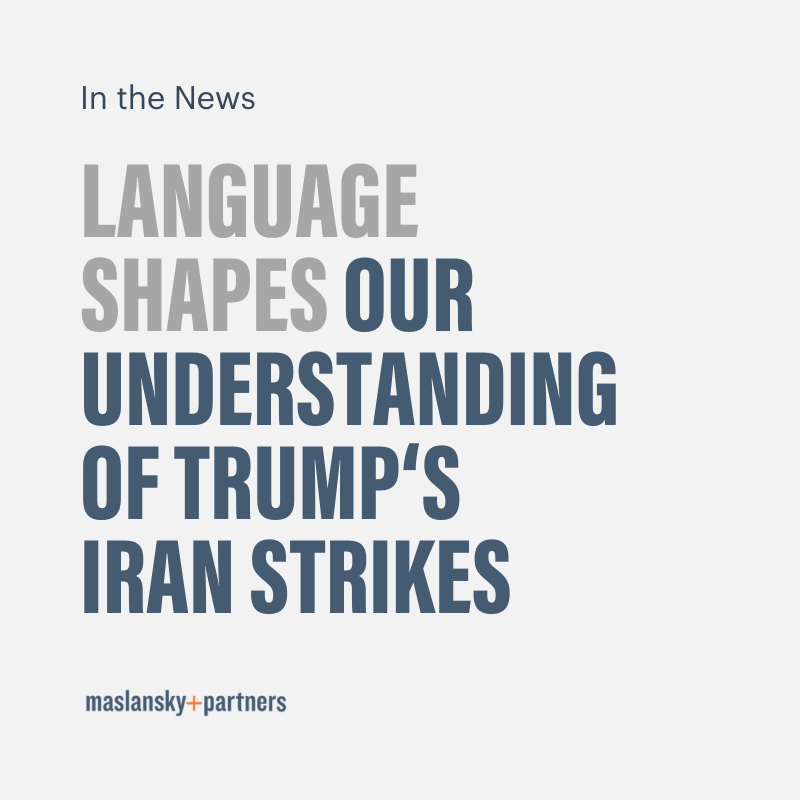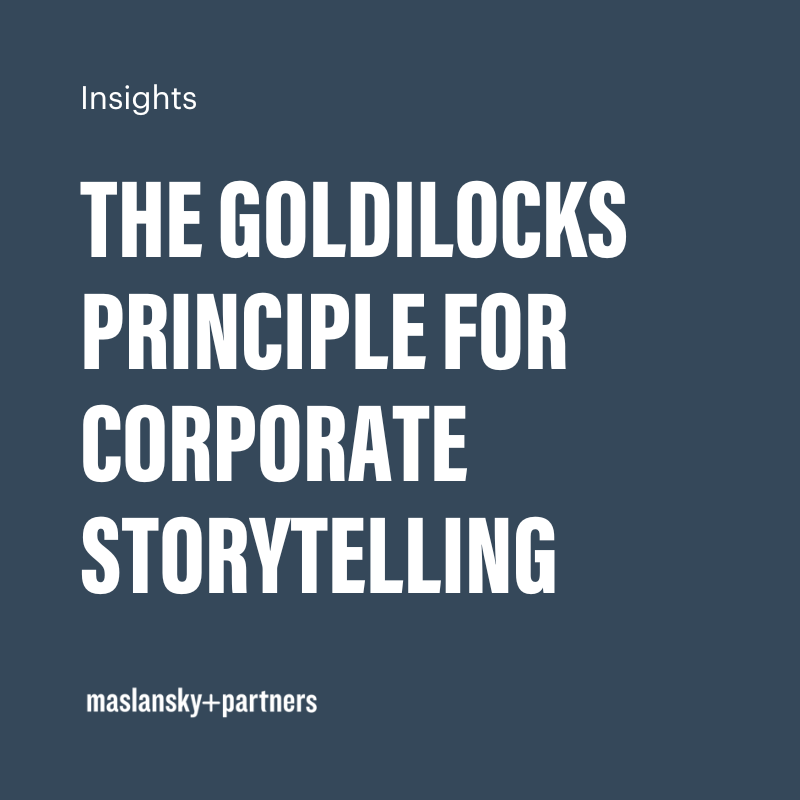The Art & Science of Message Testing: A different approach
Good message testing is a science. It involves:
+ Creating a controlled research environment
+ Forming and testing specific hypotheses about your audience
+ Carefully selecting and isolating specific linguistic variables
+ Separating out the interesting from the important, to emerge with what really matters
The problem with traditional message or language testing is: great communicators aren’t always great scientists. And great researchers aren’t always great writers or strategists. So no matter how good your copy is, it doesn’t always make for good research stimuli.
At maslansky + partners, we view things differently. We believe that good framing and language testing is not just a science, but it is also an art.
The old way vs our way
Traditional message testing looks at each area of messaging in isolation. It often includes prioritization and order exercises and relies on audiences to create that order themselves, without understanding why or what it really means.
We take a different approach. To ensure that the whole of the story is greater than the sum of its parts, we craft full narratives from those messages: using framing and language to our advantage, to tell a connected story that motivates. Our message testing approach, which uses both qualitative and quantitative research, accounts for the best of both: we unearth the best core narrative and the best supporting messages.
We start with framing. We uncover and organize a range of discrete ways to present the information (frames) that can shape how people perceive the product or therapy. It starts with words but goes further. Frames are based in behavioral science principles and patterns we’ve seen across our work. Each is meant to be distinct, so we can isolate different ideas and see how they impact beliefs. And they are intentional – each one explores a different hypothesis, so it’s instructive.
Then we turn each frame into a testable narrative: a short message with key linguistic variables that are isolated and rigorously tracked across the different narratives. So we’re not just learning which message “wins”; we’re learning how and why they win or lose. From each frame that tests well or poorly, we learn something specific about what an audience wants or worries about. Each variable informs the most important elements to emphasize and deemphasize in an effective message. And each word that tests well or poorly sharpens our understanding of how best to articulate an issue.
Sometimes we may have more messages than you would expect to see in a traditional message test, but that’s part of our process. We methodically review the messages, identifying what makes each distinct, and analyze each narrative across multiple dimensions, from the overall story it’s telling to how it resonates with audiences and how individual words make a difference. We end up with a smaller number of “control” messages to test, which we optimize and turn into research-ready stimuli. We also develop a list of key questions and lexicon probes to explore during research, to truly understand how they think.
Words matter
Our whole approach to message testing is centered around our belief that words matter. Every word you use is a choice. In any given sentence, there are several variables that make it distinctly different from another sentence that’s aimed to deliver the same point. As language strategists, we’ve mastered the art and science of breaking down those variables; understanding the key components, which variables matter and which don’t, and then applying hypotheses based on the communication landscape.
We end up with the most optimized, effective messages driven by detailed linguistic and audience insights PLUS the strategic insight on how to reach that desired objective of motivating action to drive results. In other words, we provide our clients with a road map of exactly what to say, what not to say, and the WHY behind it all.
Interested in understanding more about our unique approach to message testing? Contact us to learn how we do it – and how the right approach to testing can make a big difference for your company or organization.








